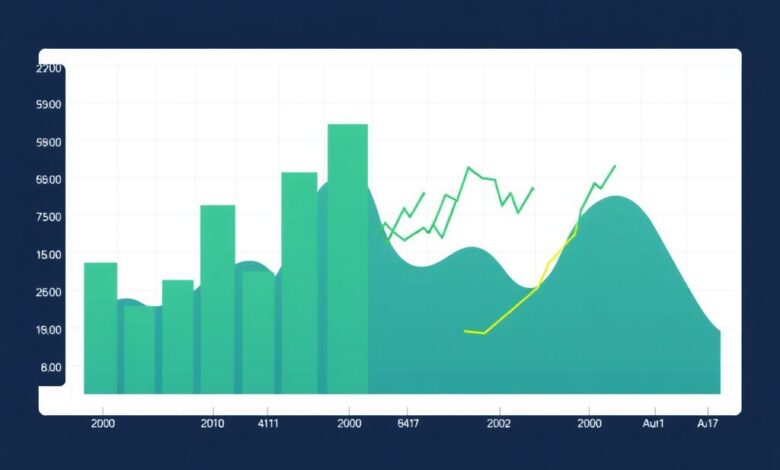What is risk tolerance and why it matters in investing

The cornerstone of a successful financial approach lies in accurately gauging your emotional response to market fluctuations. A well-crafted plan should align with how much uncertainty you can endure without compromising your peace of mind. This involves introspection and understanding the psychological factors that influence your choices.
Volatility is an inherent characteristic of markets, impacting asset values dramatically. Investors must assess their comfort levels with potential losses during turbulent times. A strategy that accommodates your emotional resilience will not only guide you through downturns but also enhance long-term outcomes.
To refine your approach, consider using quantitative metrics alongside qualitative insights into your behavior under stress. Regularly revisiting these aspects ensures that your investment blueprint remains relevant and robust against shifting market dynamics.
By aligning financial tactics with personal psychology, you can craft a more sustainable framework for wealth accumulation. This proactive stance minimizes the likelihood of reactive decisions that could derail progress during inevitable market swings.
Assessing Personal Risk Profile
Begin with a thorough evaluation of your financial situation, including assets, liabilities, and income sources. This assessment will provide clarity on how much capital you can afford to allocate to various investments without jeopardizing your financial stability.
Next, consider your investment horizon. Short-term goals typically require more conservative approaches, while longer timelines allow for greater exposure to market fluctuations. Define these timelines clearly to align your portfolio with your objectives.
Your psychological disposition towards market volatility plays a significant role in shaping your decisions. Engage in self-reflection or employ questionnaires that assess comfort levels with potential losses versus gains. Understanding this aspect can guide the formulation of an appropriate strategy.
Additionally, evaluate past experiences with market movements. Reflect on how previous downturns affected you emotionally and financially. This insight will assist in identifying whether you lean towards aggressive or cautious approaches.
Lastly, consult with financial professionals if needed. They can help synthesize the information gathered into a coherent strategy that reflects both your risk profile and overall financial goals. Balancing expertise with personal insights often leads to optimal outcomes in portfolio management.
Impact of Market Conditions
Adjust your portfolio based on current market volatility to align with your psychological comfort level. During periods of high fluctuations, consider reducing exposure to highly volatile assets, while focusing on more stable investments. This approach helps mitigate stress and enhances decision-making efficiency.
Monitor economic indicators such as interest rates, inflation, and employment statistics; these factors significantly influence market dynamics. For example, rising interest rates often lead to increased market volatility, which can affect the performance of equity holdings. Adapting your asset allocation in response to these changes can protect your capital.
In bear markets, it’s crucial to reassess your positions and possibly shift towards defensive stocks or bonds that tend to perform better under adverse conditions. This not only preserves capital but also aligns with a more conservative psychological outlook during turbulent times.
Conversely, in bull markets, capitalize on the upward momentum by increasing exposure to equities while maintaining a diversified approach. Balancing growth potential with risk management strategies is key to optimizing returns without succumbing to excessive anxiety about potential downturns.
Recognize that market sentiment plays a significant role in shaping investment choices. Emotional responses can lead to impulsive decisions during extreme market movements. Establishing predefined rules for buying or selling can help counteract emotional biases and facilitate more rational investment behavior.
Finally, regularly revisiting your asset mix in light of changing market conditions ensures that your portfolio remains aligned with both external factors and personal psychological thresholds. This proactive stance will enhance resilience against unforeseen market shifts.
Diversification Techniques Explained
Allocate assets across various classes to mitigate potential losses. A well-structured portfolio combines equities, bonds, real estate, and commodities based on your unique psychology and financial goals. This balance reduces the impact of poor performance in any single investment.
Utilize sector diversification by investing in different industries. This approach safeguards against downturns in specific sectors, such as technology or healthcare. By spreading investments across multiple sectors, you enhance resilience against market fluctuations.
Geographical diversification is another effective method. Investing in international markets can help reduce exposure to domestic economic shifts. Consider emerging markets alongside developed economies for a balanced geographical strategy.
Incorporate alternative investments like private equity or hedge funds into your portfolio. These assets often respond differently to market conditions compared to traditional stocks and bonds, providing an additional layer of stability.
Regularly rebalance your portfolio to maintain your desired allocation percentages. Market movements can shift asset values, leading to unintended risk levels. Rebalancing ensures that your strategy aligns with your personal circumstances and expectations.
Lastly, consider using index funds or exchange-traded funds (ETFs) for broad exposure within specific categories without excessive individual stock picking. These instruments can simplify diversification while maintaining low costs.
Adjusting Strategies Over Time
Regularly revisiting your portfolio is crucial for aligning it with changing circumstances and personal objectives. Here are actionable steps to optimize your approach:
- Monitor Volatility: Pay close attention to market fluctuations. High volatility may necessitate a more conservative stance, while stability could allow for increased risk-taking.
- Review Performance Metrics: Analyze how different assets have performed over time. Focus on metrics like Sharpe ratio and beta to gauge risk-adjusted returns.
- Embrace Psychological Factors: Acknowledge your emotional responses to gains and losses. Adjust your decisions based on behavioral insights, avoiding knee-jerk reactions during market swings.
Incorporating these elements will lead to more informed decisions regarding asset allocation and sector exposure.
Consider these methods for refining your portfolio:
- Rebalance Periodically: Set a schedule (e.g., quarterly or annually) to rebalance. This helps maintain your desired risk profile by selling high-performing assets and buying underperformers.
- Diversification Adjustments: As you age or your financial situation evolves, change the mix of assets. Younger investors might lean towards equities, while those nearing retirement may prefer bonds.
- Tactical Asset Allocation: Be flexible in reallocating resources among different asset classes based on current market conditions or economic forecasts.
Make data-driven adjustments that reflect both external factors and internal shifts in priorities. This proactive approach will enhance the resilience of your portfolio against unforeseen challenges.







